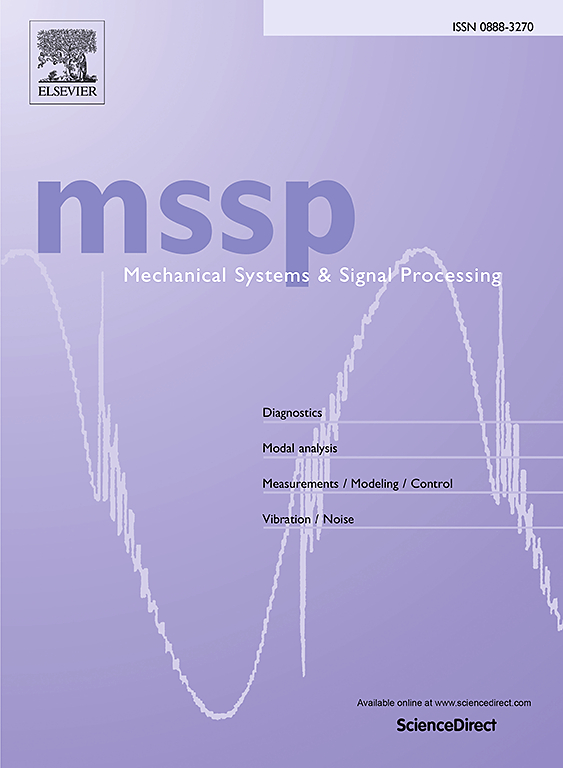CBi-AM: A fusion model for predicting inverse nonlinear dynamics of magnetorheological elastomer isolator
IF 7.9
1区 工程技术
Q1 ENGINEERING, MECHANICAL
引用次数: 0
Abstract
Magnetorheological elastomers (MREs) have attracted considerable attention due to their adaptive stiffness and damping properties, which make them highly effective for vibration isolation applications. Despite recent advancements in MRE isolation technology, significant challenges persist in accurately modeling the inverse nonlinear dynamics of MRE isolator. This paper proposes a novel CBi-AM model that integrates convolutional neural network (CNN), bi-directional long short-term memory (Bi-LSTM), and attention mechanism, to enable a refined understanding of feature importance across time-series data. Firstly, the dynamic performance of an MRE laminated isolator is test, showcasing the significant influence of excitation conditions. Then a robust dataset is generated through data augmentation on experimental signals, thereby enhancing the model training. Finally, several publicly models from both traditional machine learning and contemporary deep learning are constructed, and ablation experiments are conducted for comparative analysis. The results demonstrate that the CBi-AM model outperforms traditional and state-of-the-art baseline models in predicting the inverse performance of MRE isolator, achieving remarkable improvements in higher predictive accuracy (=0.97802) and lower error metrics (MSE=0.04157, MAE=0.10665), which also exhibits its enhanced robustness and generalization capabilities. In addition to its intrinsic contribution to advancing inverse modeling techniques for MRE devices, this research lays the groundwork for future developments in modeling other mechanical systems characterized by strong nonlinearity.
CBi-AM:磁流变弹性体隔振器逆非线性动力学预测的融合模型
磁流变弹性体(MREs)由于其自适应刚度和阻尼特性而引起了相当大的关注,这使得它们在隔振应用中非常有效。尽管最近MRE隔离技术取得了进展,但在准确建模MRE隔离器的逆非线性动力学方面仍然存在重大挑战。本文提出了一种新的CBi-AM模型,该模型集成了卷积神经网络(CNN)、双向长短期记忆(Bi-LSTM)和注意机制,能够更好地理解时间序列数据中的特征重要性。首先,对多层隔振器的动态性能进行了测试,验证了激励条件对隔振器动态性能的显著影响。然后通过对实验信号的数据增强生成鲁棒数据集,从而增强模型训练。最后,构建了传统机器学习和现代深度学习的几个公开模型,并进行了烧蚀实验进行对比分析。结果表明,CBi-AM模型在预测MRE隔离器逆性能方面优于传统和最先进的基线模型,在更高的预测精度(R2=0.97802)和更低的误差指标(MSE=0.04157, MAE=0.10665)方面取得了显著的进步,并显示出增强的鲁棒性和泛化能力。除了对推进MRE器件的逆建模技术的内在贡献外,本研究还为其他强非线性机械系统建模的未来发展奠定了基础。
本文章由计算机程序翻译,如有差异,请以英文原文为准。
求助全文
约1分钟内获得全文
求助全文
来源期刊

Mechanical Systems and Signal Processing
工程技术-工程:机械
CiteScore
14.80
自引率
13.10%
发文量
1183
审稿时长
5.4 months
期刊介绍:
Journal Name: Mechanical Systems and Signal Processing (MSSP)
Interdisciplinary Focus:
Mechanical, Aerospace, and Civil Engineering
Purpose:Reporting scientific advancements of the highest quality
Arising from new techniques in sensing, instrumentation, signal processing, modelling, and control of dynamic systems
 求助内容:
求助内容: 应助结果提醒方式:
应助结果提醒方式:


